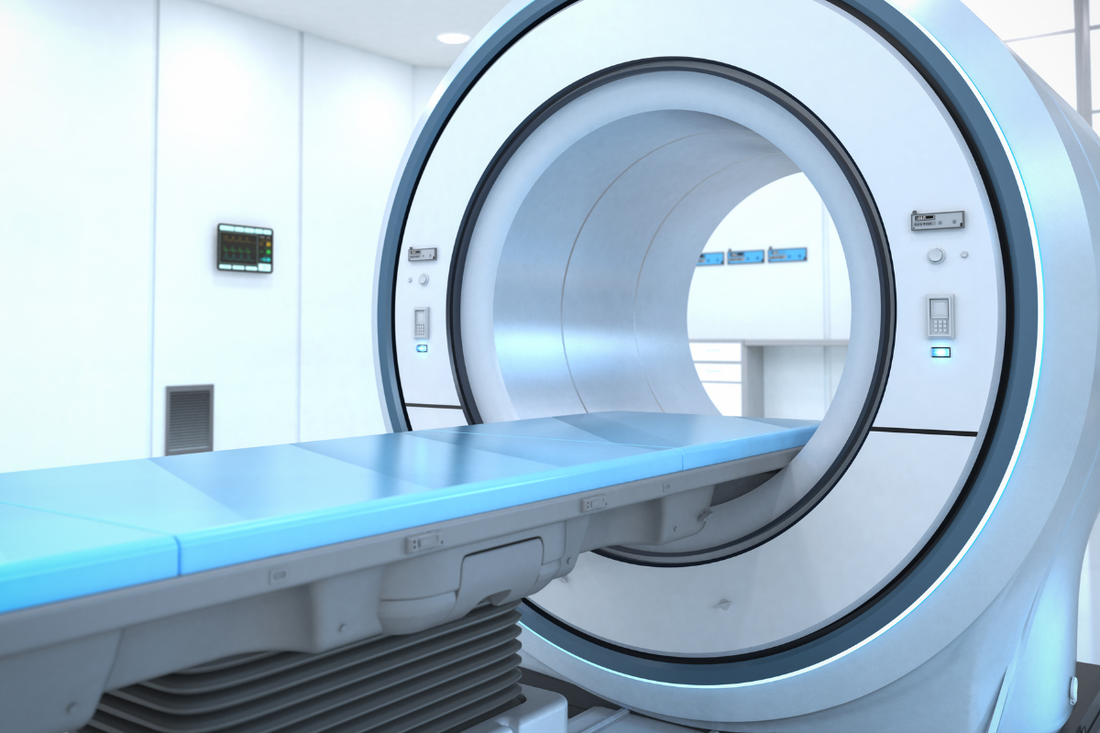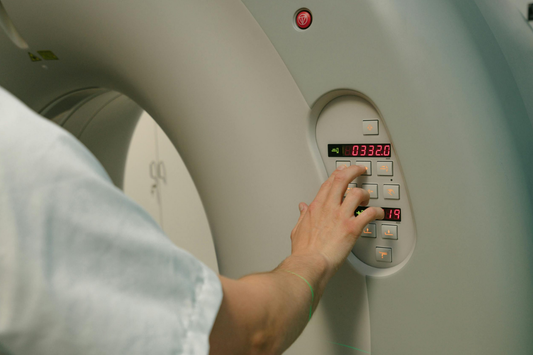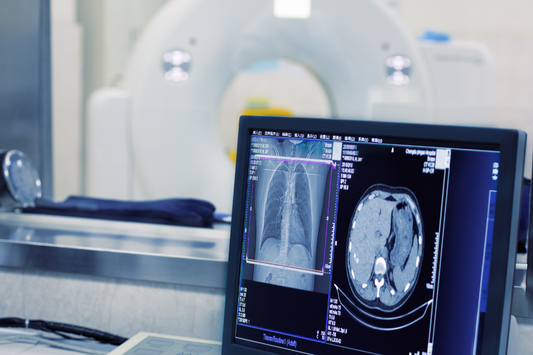
The Role of Log File Analysis in Forecasting CT Scanner Part Failures
Share
CT scanners work hard every day, and every part inside takes a beating over time. Minor issues can build up quickly if you're not paying attention. Log files quietly track everything your scanner does, including the early warning signs most people miss.
These files record heat changes, voltage spikes, slow responses, and repeated errors. Reading them closely lets you spot failing parts before they cause serious problems. That kind of insight helps you avoid surprise breakdowns and expensive downtime.
Having the right CT scanner parts on hand prepares your system for whatever comes next. Sigmed Imaging provides the parts you need to stay ahead of CT scanner failures.
Below, you’ll learn about the role log file analysis plays in forecasting CT scanner part failures.
Spot the Wear Before It Wins
Every CT scanner keeps a quiet record of its usage. The log files show how often parts like the X-ray tube or gantry work under stress. That kind of pressure adds up, even if the scanner seems fine on the outside.
The numbers shift when these parts get pushed too often or for too long. Usage trends slowly move past the safe zone, and that's when issues begin to grow. Waiting too long can turn a simple fix into a major repair.
Checking this data regularly gives you a real edge. It helps you spot the warning signs early and plan ahead. Replacing a worn part before it fails saves time and money in the long run.
Catch the Silent Surge
Most voltage spikes happen fast and leave no clear signs behind. Your CT scanner might keep working, but that doesn’t mean everything is fine. Over time, small power surges can slowly damage sensitive parts without you knowing it. These quiet hits wear down your system piece by piece.
Log files don’t miss a thing. They track every spike, no matter how small or short. Looking at that data helps you spot strange patterns in the power flow. A few minutes of review can reveal trouble building deep inside your scanner.
Unstable energy often starts with a faulty generator or power regulator. These issues don't always set off alarms right away. Still, the log shows where the surge started and how often it happens. That kind of clue points you to the part that needs attention.
Fixing power problems early keeps your CT scanner safe and steady. A quick repair today can stop bigger issues tomorrow. Staying alert to hidden power changes protects your investment and keeps patients from being delayed.
Listen to the Error That Keeps Repeating
Small errors often appear and disappear without much notice. They might seem harmless, especially when your CT scanner still runs. Over time, though, these same errors can start showing up more often, pointing to something deeper going wrong.
Log files help connect the dots. When the same issue occurs repeatedly, it usually relates to a specific part struggling to keep up. You might see delays in startup, slower scan times, or problems with image quality.
Catching these patterns early allows you to act before things get worse. Replacing one weak part can prevent a chain reaction that shuts down your entire system. That kind of smart timing keeps everything running smoothly and avoids a costly emergency.
Heat Tells the Real Story
CT logs don’t just track errors and power issues. They also record heat levels with more detail than most people realize. That data shows how your scanner handles stress during busy hours and long scan sessions.
Heat Changes with Workload
Temperature often rises when the system is under heavy use. Some heat is normal, but steady increases during short tasks could mean trouble. These signs suggest your cooling system isn’t working as well as it should.
Airflow Might Be Blocked
Clogs in vents or dust buildup inside the unit can trap heat. Even a small blockage changes how air moves through the scanner. When airflow slows down, internal parts start running hotter than they’re built to handle.
Fans Lose Power Over Time
Cooling fans wear out with age and often slow down without making noise. A weak fan can't push out enough hot air, especially during long scans. The logs pick up these subtle changes long before the fan stops completely.
Uncover the Lag That Slows Everything Down
When your CT scanner starts reacting slower than usual, something is wrong behind the scenes. These delays can be easy to miss initially, but often worsen over time. Slow responses during startup, scanning, or image processing can signal deeper issues inside the system.
Logs make these lags easy to see. They record the exact time each part takes to respond, showing you where things are slowing down. A pattern of delays often points to aging control boards or processors that can’t keep up anymore.
Fixing the issue early keeps your scans accurate and on time. Ignoring it could lead to poor image quality or canceled procedures. Reading the logs gives you the head start needed to avoid breakdowns and keep patients moving through the system smoothly.
Connect the Dots on Random Downtime
Sudden shutdowns can seem mysterious. Your CT scanner may power off during a scan or refuse to start at all. These problems seem random, but the cause often hides in plain sight.
Log files hold the clues you need. Each event is recorded in order, showing exactly what the system was doing before it failed. You might find a power dip, a sensor error, or an overheating piece right before the shutdown.
Many times, a single part fails under stress without setting off alarms. That part might work fine most of the time, but then it crashes when the pressure builds. Logs help you trace the problem back to its true source.
Solving the mystery early saves you time and stress. You avoid repeat shutdowns and get your system back to full strength. A simple repair based on the logs can stop a frustrating cycle of delays.
Follow the Strain on the Spin
The gantry in your CT scanner needs to spin smoothly for clean, fast scans. If it starts working harder than usual, that extra strain shows up in the motor torque logs. These numbers tell you how much force the motor uses to keep the gantry moving.
Over time, rising torque levels can point to a worn bearing or something out of alignment. Even small shifts in the frame can make the motor work overtime. That extra load puts stress on both the motor and other moving parts.
Catching this early helps you avoid bigger problems. You can repair or adjust the part before it damages the whole system. Keeping the gantry spinning smoothly means better scans and fewer costly delays.

Decode the Silent Disconnect
When parts of your CT scanner stop talking to each other, it doesn’t always make a sound. These quiet connection losses can happen during scans or right before a startup. Logs often show tiny gaps in communication that point to a bigger problem.
A failing slip ring or loose cable is usually behind these issues. They don’t always break right away, but start showing warning signs through data interruptions. Watch for these red flags in the logs:
-
Repeated signal timeouts between the gantry and the main processor
This shows the signal is blocked or slowed, which may mean the slip ring is worn out. -
Short gaps during image transfers
These can point to a loose or corroded cable struggling to maintain a solid connection. -
Power fluctuation reports without other system errors
That often means the energy transfer through the slip ring is unstable, even if it hasn’t failed yet.
Solving these small disconnects early keeps your scanner running smoothly and avoids sudden scan failures.
Watch the Backup System Struggle
Backup power protects your CT scanner when the main power fails. Logs show every time it turns on and how much load it carries during that time. If backup power kicks in more often than expected, something isn’t right with your main power flow.
When your UPS or internal batteries are getting weak, they start working harder and more often. That extra strain appears in the logs long before the backup fails completely. Catching this early helps you replace worn parts before your scanner loses power during a scan.
Stay Ahead with the Right CT Scanner Parts
Log file analysis gives you a clear view of how your equipment is really performing. When it’s time to replace worn components, having dependable CT scanner parts makes all the difference. Sigmed Imaging offers the quality and support you need to keep your scanner running without surprise failures.
Key Takeaways
How can CT scanner logs help prevent unexpected downtime?
CT logs track patterns like slow responses, heat spikes, and power issues that signal early part failure. Reading these logs helps you catch problems before they shut down your system.
What are the signs in the log files that a CT scanner part is starting to fail?
Repeated errors, rising heat levels, and slow motor responses are signs of a part being under stress. These warning patterns often appear in the logs before the part fails.
Why does my CT scanner keep shutting down randomly?
Log files often show hidden triggers, such as a sensor glitch, overheating part, or weak power flow. These clues help you trace shutdowns back to a specific issue before they get worse.
How do I know if the gantry motor or frame is wearing out?
Motor torque logs reveal when the gantry is straining to rotate. If torque steadily increases, it could mean a worn bearing or a misaligned frame that needs repair.
What problems can show up in CT communication logs?
Subtle connection gaps in the logs can point to a failing slip ring or loose cable. These issues don’t always make noise but can lead to scan errors or delays if ignored.



